Here’s my master collection of space links. You wouldn’t believe how often I refer back to this page.
NASA TV and TV schedules
NASA TV direct links for online viewing: Windows Media / Real Media / Quicktime
NASA TV breaking news schedule and the TV schedule during shuttle missions
NASA TV Media Channel — caters towards the media, so it contains more video “packages” and less fluffy historical programs. During missions it’s the same as the public channel. Rarely it’ll have exclusive live coverage of something because there’s two things happening at the same time. (Windows Media only, NASA drank the Microsoft Kool Aid)
Alternative feeds of NASA TV if NASA/Yahoo goes down.
Here’s NASA’s collection of HD videos for download. An HD version of NASA TV’s live 24-7 channel is now on the air but sadly not yet carried by any cable or satellite companies. However you should be able to watch NASA TV HD online via the links here.
Countdown clocks
Flight Data Files (e.g. checklists for ascent, entry, EVAs, etc.)
NASA’s online countdown clock (Java) and another, better clock for ELV rockets
NASA’s countdown clock in simple flash form
All of these clocks from NASA automatically transition to mission elapsed time (MET) after launch. A guy in the Czech Republic also runs this cool 9-pane configurable status page that is great for monitoring several sources at once during critical periods, like a launch attempt.
Space Shuttle reference:
- typical launch sequence
- shuttle MCC layout
- press materials including ground tracks
- all possible ground tracks
- entry altitude profile
International Space Station links:
- ISS assembly sequence,
- ISS truss overview,
- ISS daily status reports from NASA,
- the Russian tracking page, useful for seeing Progress status,
- ISS-to-ground audio loop (the best times to listen are 2am – 5pm EDT)
- ISS webcam
- ISS timelines
Trackers / Overflight Visibility:
- Heavens Above , enter your location and be amazed
- Sat Tracker using Google Maps
- Another tracking page, this one using Google Maps and showing live position and visibility stats
- shuttle sighting Java app (incl during atmospheric glide)
This space.com article from 2006 had a nice graphic showing the visibility of each launch all the way up the east coast of the US. But it’s really only visible for nighttime or dusk launches. If you’re in the NY/NJ area, you’ll need to look towards the south/southeast starting around 6 minutes after launch.
Status and discussion
SpaceFlightNow is good for getting basic news and status; they have the best launch calendar on the web. They have a premium service that I used to subscribe to for downloable video packages, but they pissed me off with their retarded billing so I stopped renewing. John44’s Netherlands site (link below) satisfies the video requirement.
NASAspaceflight.com’s front page and discussion forums are for serious fans; for each shuttle mission, the respective Discovery / Atlantis / Endeavor forum will be of most interest and will include daily threads with minute by minute updates of the mission. Truly hardcore fans pay for NSF’s Level2 premium service, which apparently offers an insane amount of information. I don’t subscribe to L2 for the same reason I don’t have cable TV: I would never stop looking at it.
The NSF forums led me to an incredible resource for catching NASA TV events after the fact: www.space-multimedia.nl.eu.org is a site in the Netherlands apparently run by one guy (John44 on the NSF forums). He captures the NASA TV events and makes them available for download. For free!
Bill Harwood is a reporter at CBS who has been covering the space program for years, and whose website provides a tres aure trove of rapid-access information, including launch windows, mission timelines, historical events (e.g. launch abort history) and even some killer Excel spreadsheets that further collate all this data.
CollectSpace and Unmanned Spaceflight are two excellent sites that serve respective niche audiences. Actually, UMSF isn’t really a niche audience, as it covers all of the unmanned probes currently (or soon to be) zipping around the solar system, including Cassini, New Horizons, Messenger and the fleet of Mars probes.
Watching a launch at Kennedy Space Center
Photographer Ben Cooper has a great writeup about what your viewing options are, both paid and free.
If you’re making the trip, consider staying at the Surf Studio in Cocoa Beach. It’s a nice little beach front motel, owned and operated by the Greenwald family since 1948. It’s down at the south end of Cocoa Beach, thus a little bit further from Kennedy, but it’s only a 5 minute extra drive and gets you down to a more quiet stretch of beach.
WMMB is a local AM station (AM 1240 and AM 1350) that has launch coverage starting at about 3 hours before launch, and supposedly does not talk over the NASA commentary once the countdown gets close and then during the 8 minute launch phase.
SCANNER INFO
If you have a radio scanner (i.e. for police radio), here are some frequencies of interest: NASA TV audio on 146.94 MHz (from ~3 hours before liftoff to landing) NASA (TV?) audio on 442.6 MHz Both (?) operated by local ham club http://www.lisats.org
http://www.milaircomms.com/uhf_ksc.html Some highlights: 121.750 KSC NASA Ground 126.650 KSC Weather / STA 128.550 KSC NASA Tower
Here are the really good frequencies, but you need a scanner that can pick up the military bands: 296.800 MHz – Air-to-ground, or orbiter-to-suit 259.700 MHz – Air-to-ground, or suit-to-orbiter 279.000 MHz – Suit-to-orbiter, or suit-to-suit 243.000 MHz – Standard military aircraft emergency frequency
http://home.cfl.rr.com/scanner/launch.htm
Ham radio repeaters all over the country that “carry shuttle audio during missions”: http://www.amsat.org/amsat/sarex/shutfreq.html (probably outdated) http://shuttleaudio.info/ (somewhat more up to date)
 On the day before the scheduled launch, I went in to look around and check things out. After a few hours of lounging around the press building and getting lunch in the cafeteria, I set up the new telescope (which I’ll write about soon) at the edge of the turning basin. This first picture shows it with the large countdown clock in the field in the background, and the large silver boat is the covered barge that they used to transport the large orange fuel tank from the factory in New Orleans.
On the day before the scheduled launch, I went in to look around and check things out. After a few hours of lounging around the press building and getting lunch in the cafeteria, I set up the new telescope (which I’ll write about soon) at the edge of the turning basin. This first picture shows it with the large countdown clock in the field in the background, and the large silver boat is the covered barge that they used to transport the large orange fuel tank from the factory in New Orleans. At one point a bird fight erupted over the water. About a half-dozen ospreys were quite upset with a bald eagle. Eventually one of the ospreys got a good dig into the eagle’s back and he hauled ass out of there. I attempted to take pictures, but my camera only got one picture before declaring that it had weak batteries, oops it meant dead batteries, and quickly going dead. Thanks Canon! In this one picture, you can see the eagle at the left, turning hard just below the tree line, but you can’t see any ospreys (the bird on the buoy is just a heron or something watching the show).
At one point a bird fight erupted over the water. About a half-dozen ospreys were quite upset with a bald eagle. Eventually one of the ospreys got a good dig into the eagle’s back and he hauled ass out of there. I attempted to take pictures, but my camera only got one picture before declaring that it had weak batteries, oops it meant dead batteries, and quickly going dead. Thanks Canon! In this one picture, you can see the eagle at the left, turning hard just below the tree line, but you can’t see any ospreys (the bird on the buoy is just a heron or something watching the show).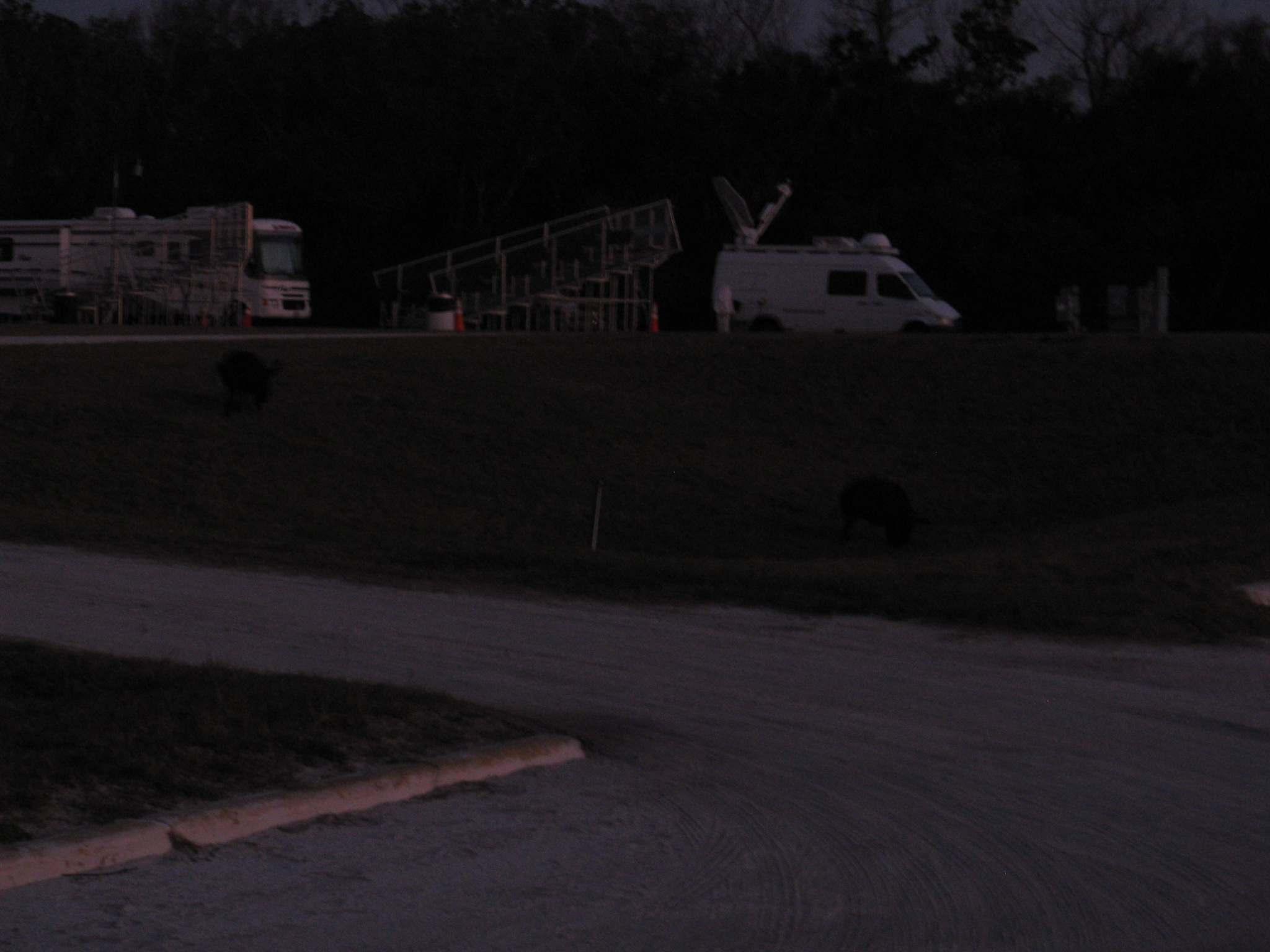 As dusk fell, feral pigs came out of the brush to sniff around on the grass. One of the reporters here said he’s seen bobcats, and once almost stepped on a rattlesnake.
As dusk fell, feral pigs came out of the brush to sniff around on the grass. One of the reporters here said he’s seen bobcats, and once almost stepped on a rattlesnake.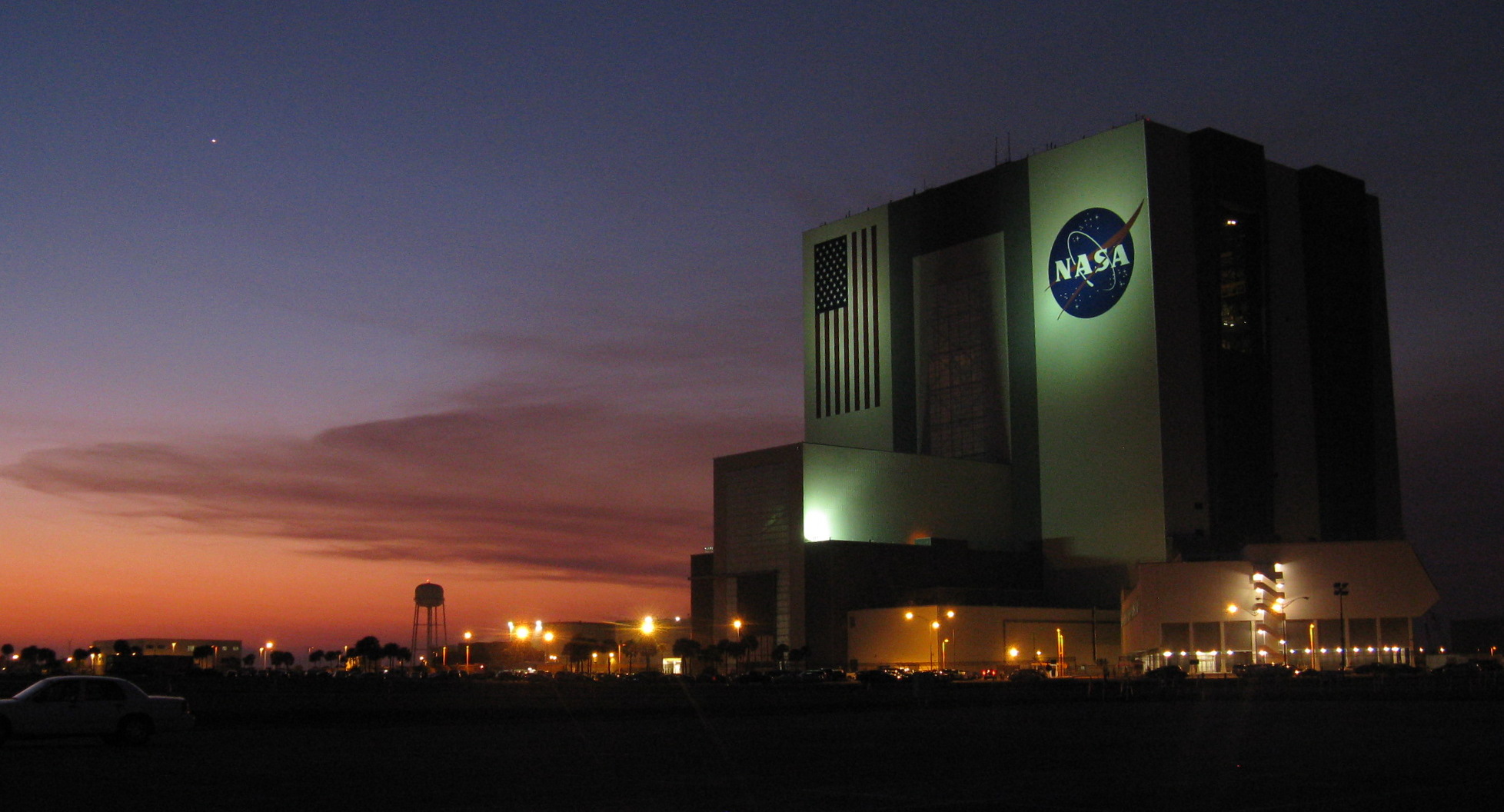 On Wednesday, I arrived at midday ready for a long day of countdown and launch monitoring. However at around 2:30pm (well into the countdown but still 7 hours to go) the scrubbed due to a fuel leak. After moping around the press site for a while I pulled out of there and went to dinner with some work folks. As of right now the word is that they will try again on Sunday. I was planning on driving back home on Saturday, but I’m going to tough it out and stay until this launches. Yes, extending my vacation in Florida, it’s rough!
On Wednesday, I arrived at midday ready for a long day of countdown and launch monitoring. However at around 2:30pm (well into the countdown but still 7 hours to go) the scrubbed due to a fuel leak. After moping around the press site for a while I pulled out of there and went to dinner with some work folks. As of right now the word is that they will try again on Sunday. I was planning on driving back home on Saturday, but I’m going to tough it out and stay until this launches. Yes, extending my vacation in Florida, it’s rough! Struggle with decisions like A) go to beach, B) get lunch or C) read book.
Struggle with decisions like A) go to beach, B) get lunch or C) read book.
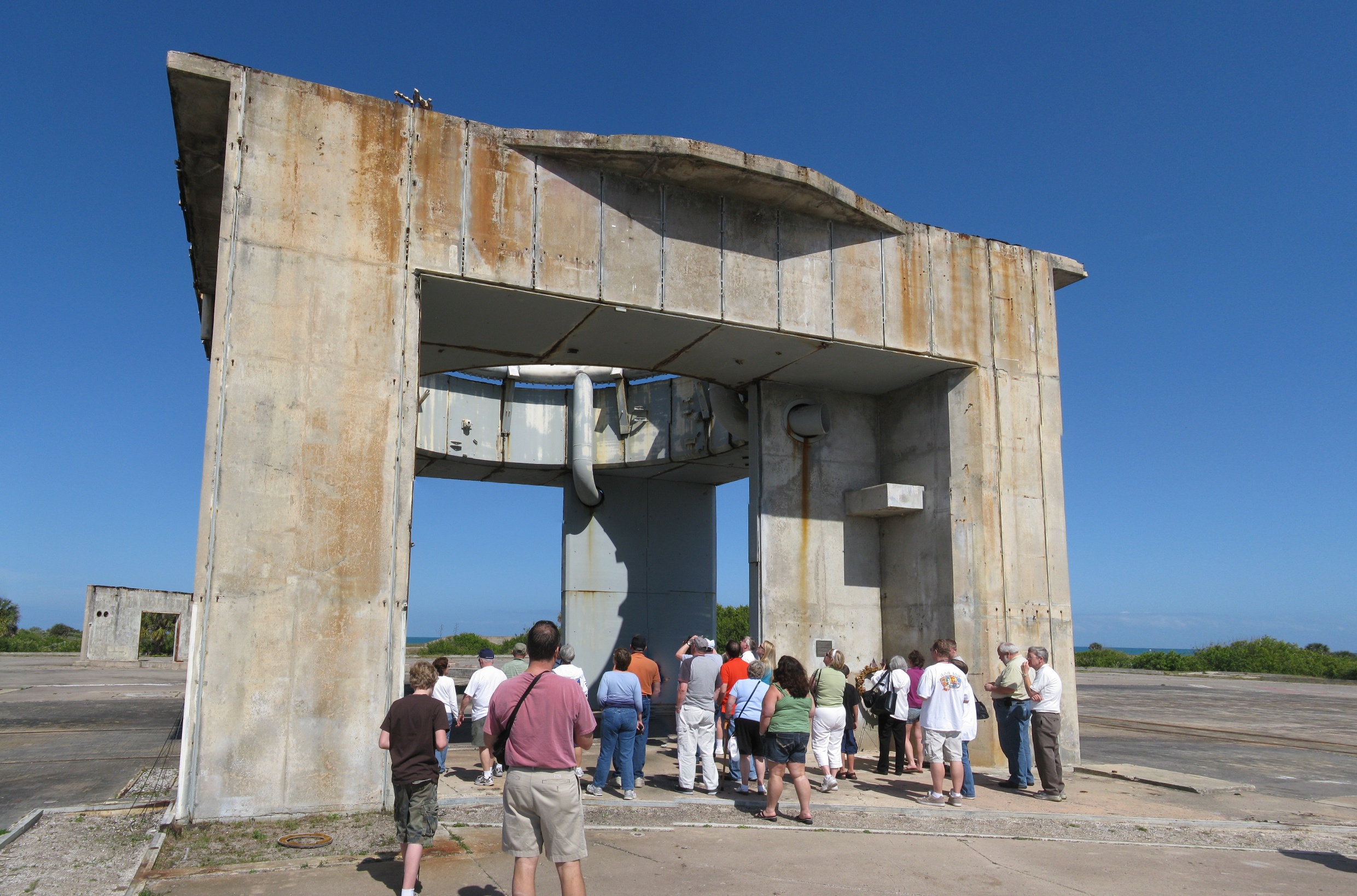 Go on the “Now and Then” bus tour of the old Cape Canaveral launch pads. Ending up at the Saturn V site, which by the end of the day was largely empty, allowing me to get a nice quiet look at the business end.
Go on the “Now and Then” bus tour of the old Cape Canaveral launch pads. Ending up at the Saturn V site, which by the end of the day was largely empty, allowing me to get a nice quiet look at the business end.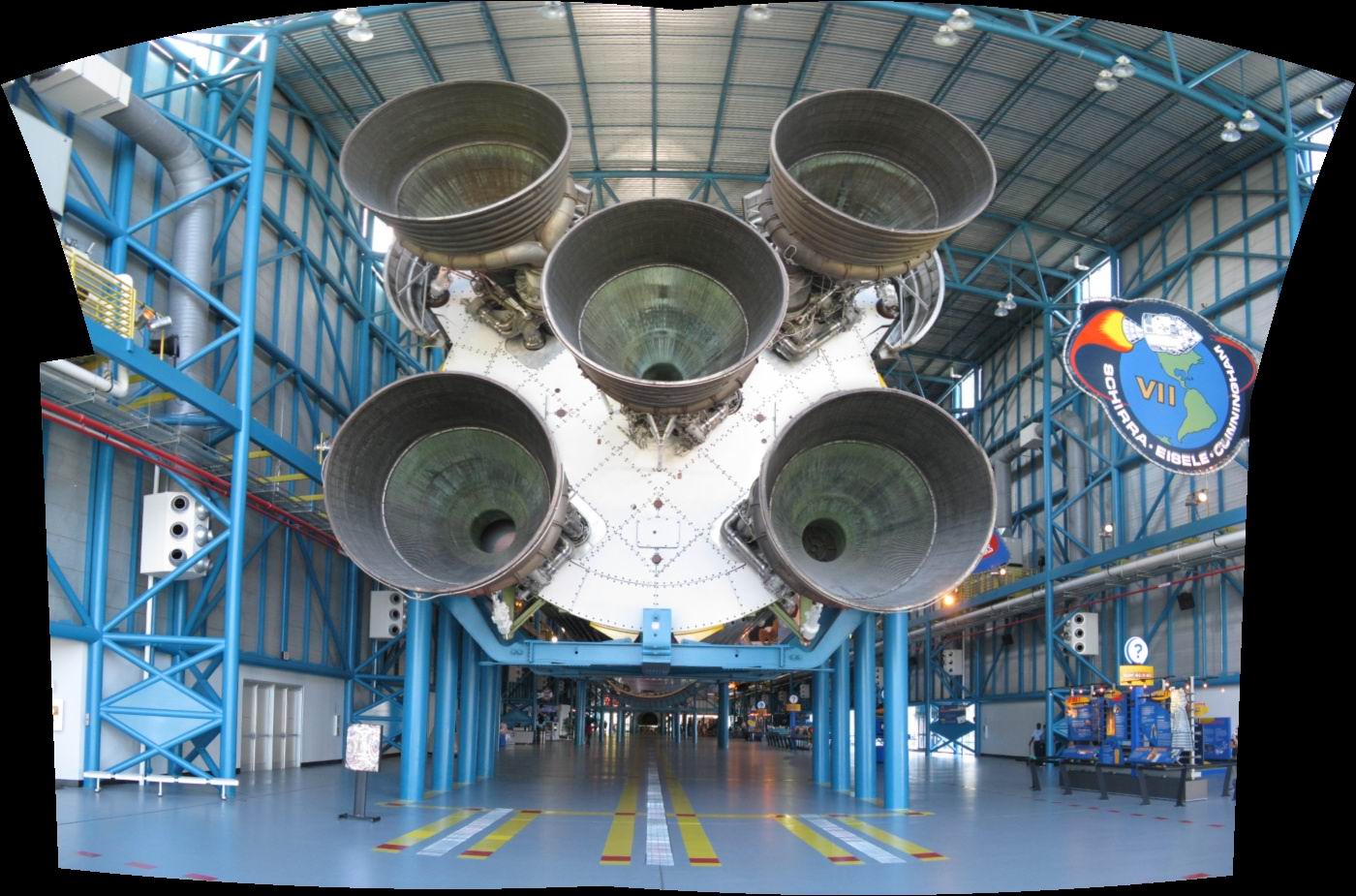

 Reminded once again of how, during the Dec 2007 trip, I completely forgot about the Atlas launch happening then (after the shuttle scrubbed) and it launched as we were sitting in a theater taking in a movie.
Reminded once again of how, during the Dec 2007 trip, I completely forgot about the Atlas launch happening then (after the shuttle scrubbed) and it launched as we were sitting in a theater taking in a movie.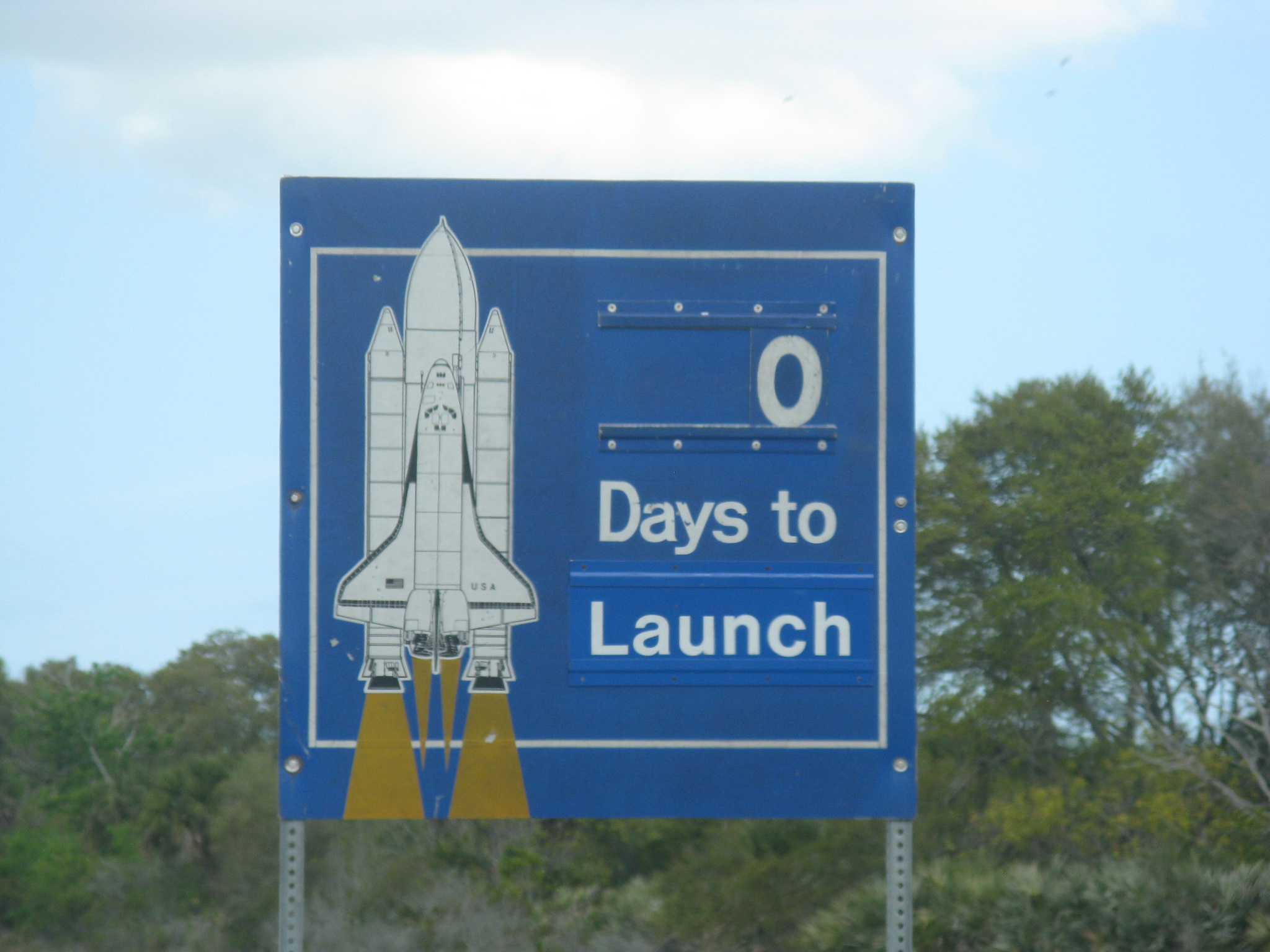 Sunday March 15th. Tanking took place between 10am and 1pm; by 1:30pm we knew they’d gotten past the problem that caused the scrub last Wednesday.
Sunday March 15th. Tanking took place between 10am and 1pm; by 1:30pm we knew they’d gotten past the problem that caused the scrub last Wednesday.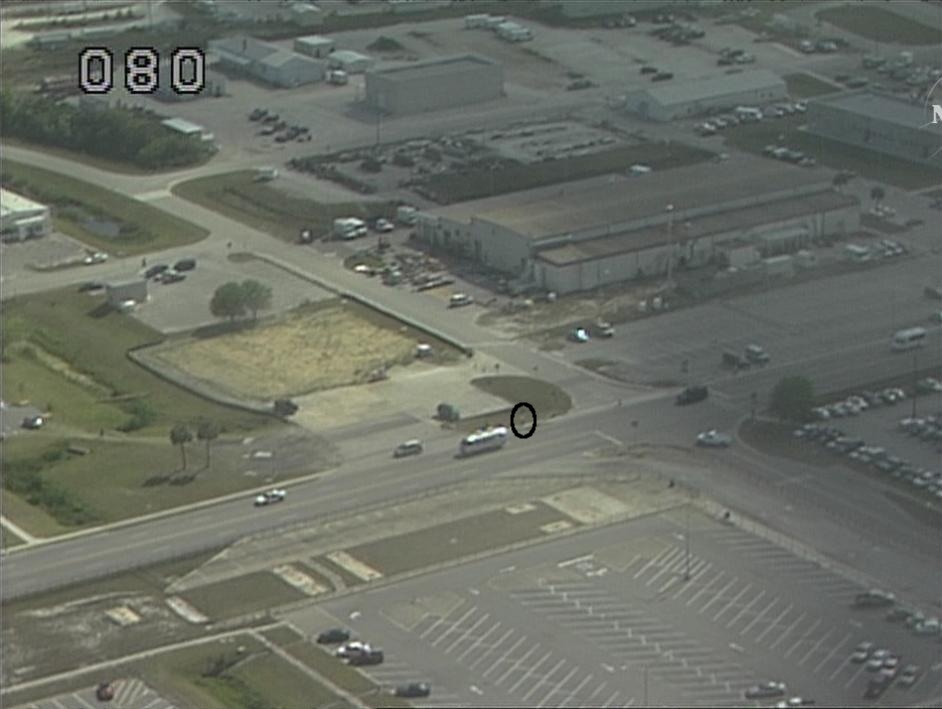 1. Astrovan driving past the VAB, with me on the sidewalk waving at it (circled in photo, click to enlarge). I knew that they would stop around there some place to drop someone off, so I was ready to take pictures and wave at astronauts. Unfortunately, I was standing in the wrong place and the convoy flew right by me!
1. Astrovan driving past the VAB, with me on the sidewalk waving at it (circled in photo, click to enlarge). I knew that they would stop around there some place to drop someone off, so I was ready to take pictures and wave at astronauts. Unfortunately, I was standing in the wrong place and the convoy flew right by me!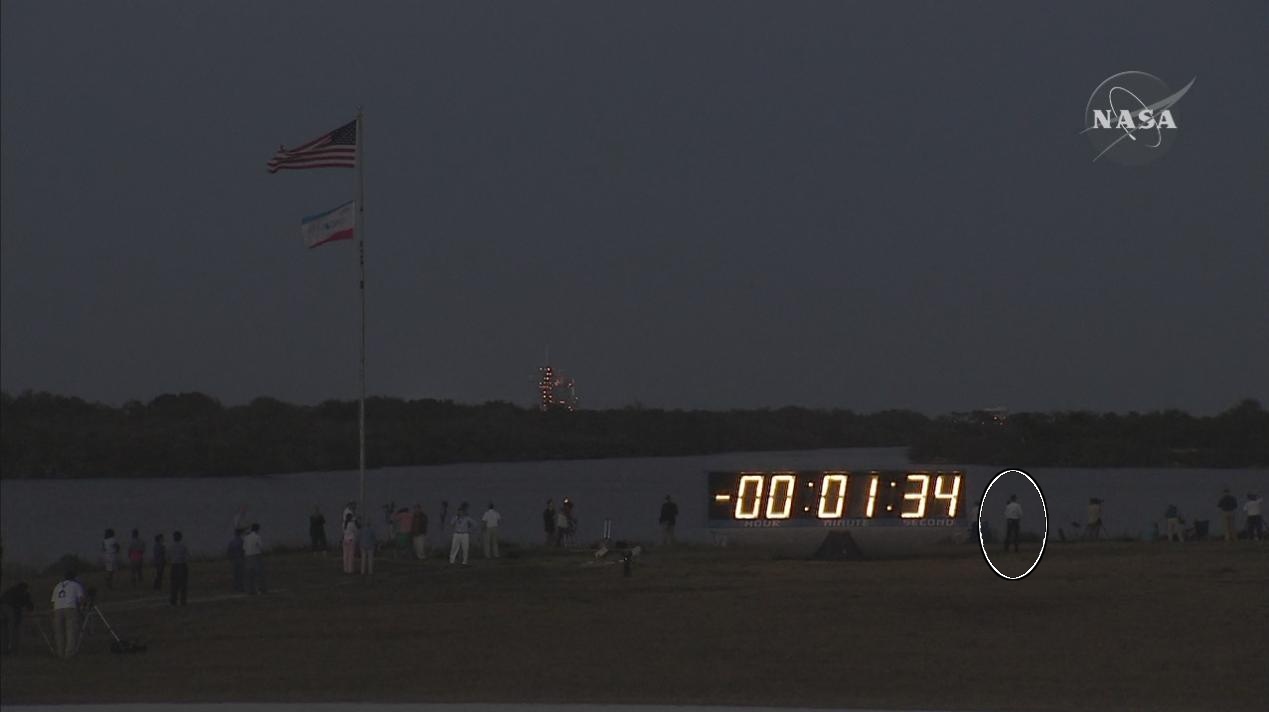 2. View from the press site just before launch, with me standing to the right of the countdown clock. There was a staffer shooing people away from in front of the clock. About 10 feet in front of me was the water’s edge, and that’s where most people were standing and setting up their camera tripods (news photographers).
2. View from the press site just before launch, with me standing to the right of the countdown clock. There was a staffer shooing people away from in front of the clock. About 10 feet in front of me was the water’s edge, and that’s where most people were standing and setting up their camera tripods (news photographers).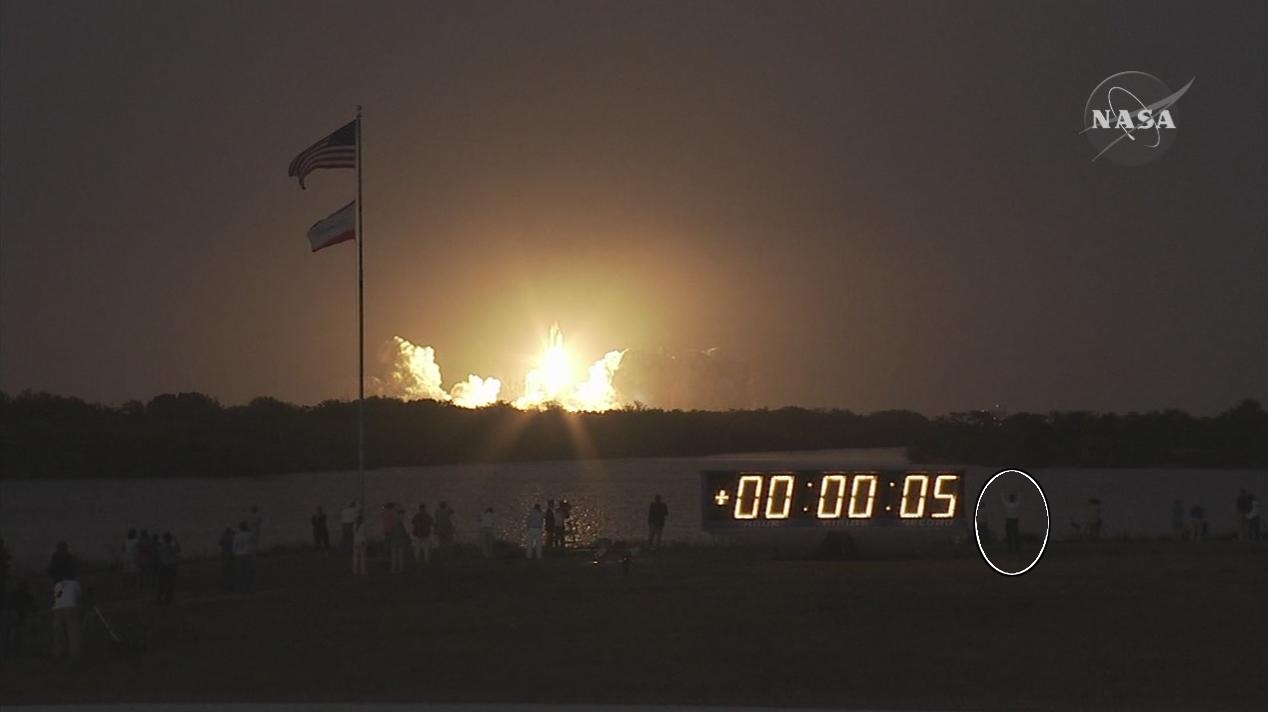 3. View from the press site seconds after launch, with me throwing my arms in the air. 20+ years!
3. View from the press site seconds after launch, with me throwing my arms in the air. 20+ years!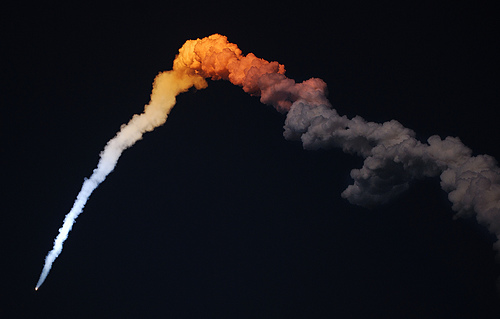 Here’s what two of the rock stars of NASA said at the press briefing after the launch (which I snuck into):
Here’s what two of the rock stars of NASA said at the press briefing after the launch (which I snuck into):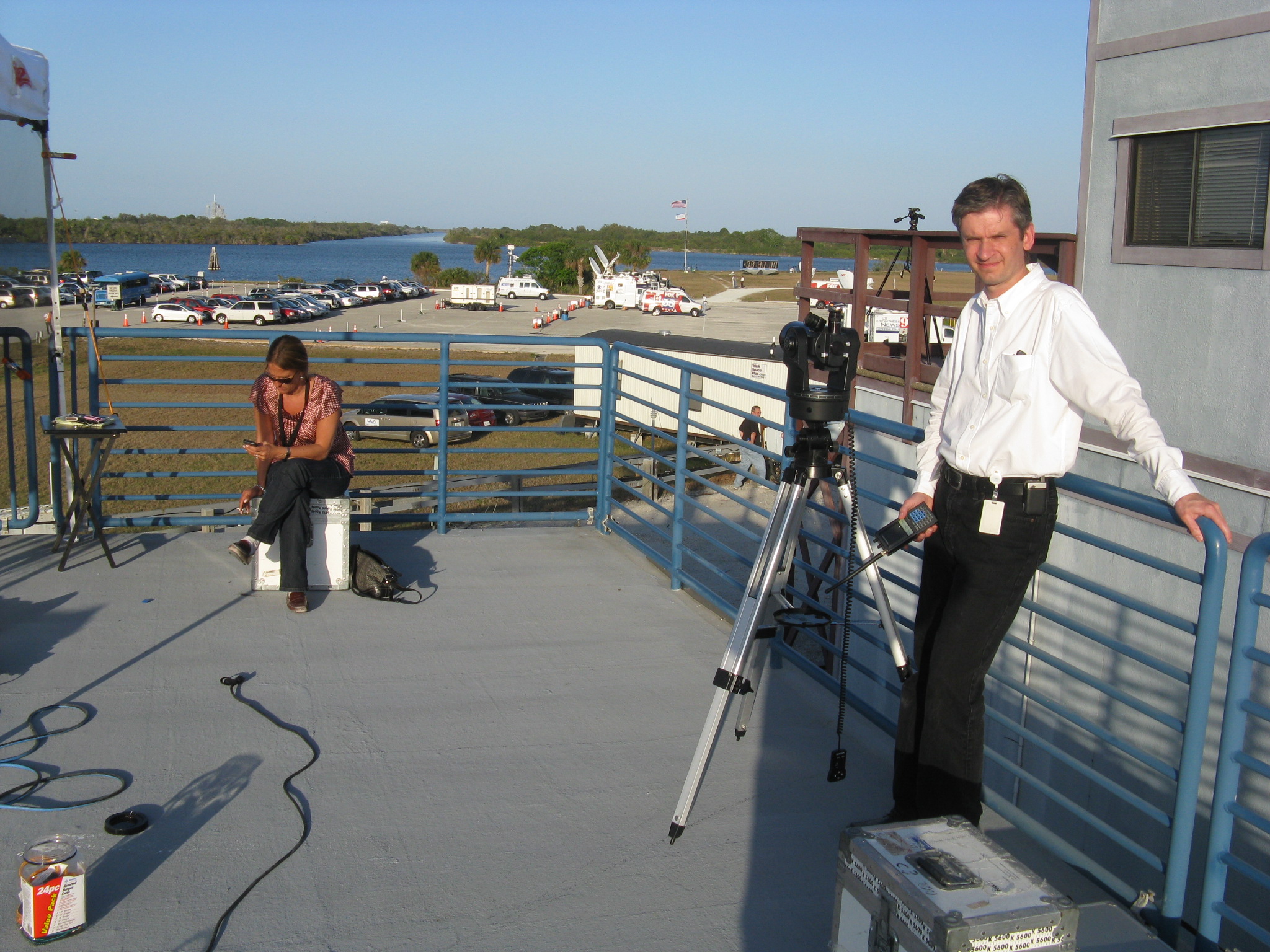 It’s sad that there’s only 8 more of these left, maybe 9 or 10 if they throw money at NASA to extend the shuttle program a little bit more. It’s a beautiful thing to see on the pad and provided us with such gorgeous launches. In 2015 we should start to see
It’s sad that there’s only 8 more of these left, maybe 9 or 10 if they throw money at NASA to extend the shuttle program a little bit more. It’s a beautiful thing to see on the pad and provided us with such gorgeous launches. In 2015 we should start to see  Turns out that they were part of a group called the
Turns out that they were part of a group called the  Note the fancy bearing made of plywood, although I’ll admit that there’s a couple small pieces of teflon in there (that was a later upgrade, actually). See the secondary mirror suspended in the top end of the tube — I think those three legs are made of paint stirring sticks.
Note the fancy bearing made of plywood, although I’ll admit that there’s a couple small pieces of teflon in there (that was a later upgrade, actually). See the secondary mirror suspended in the top end of the tube — I think those three legs are made of paint stirring sticks. 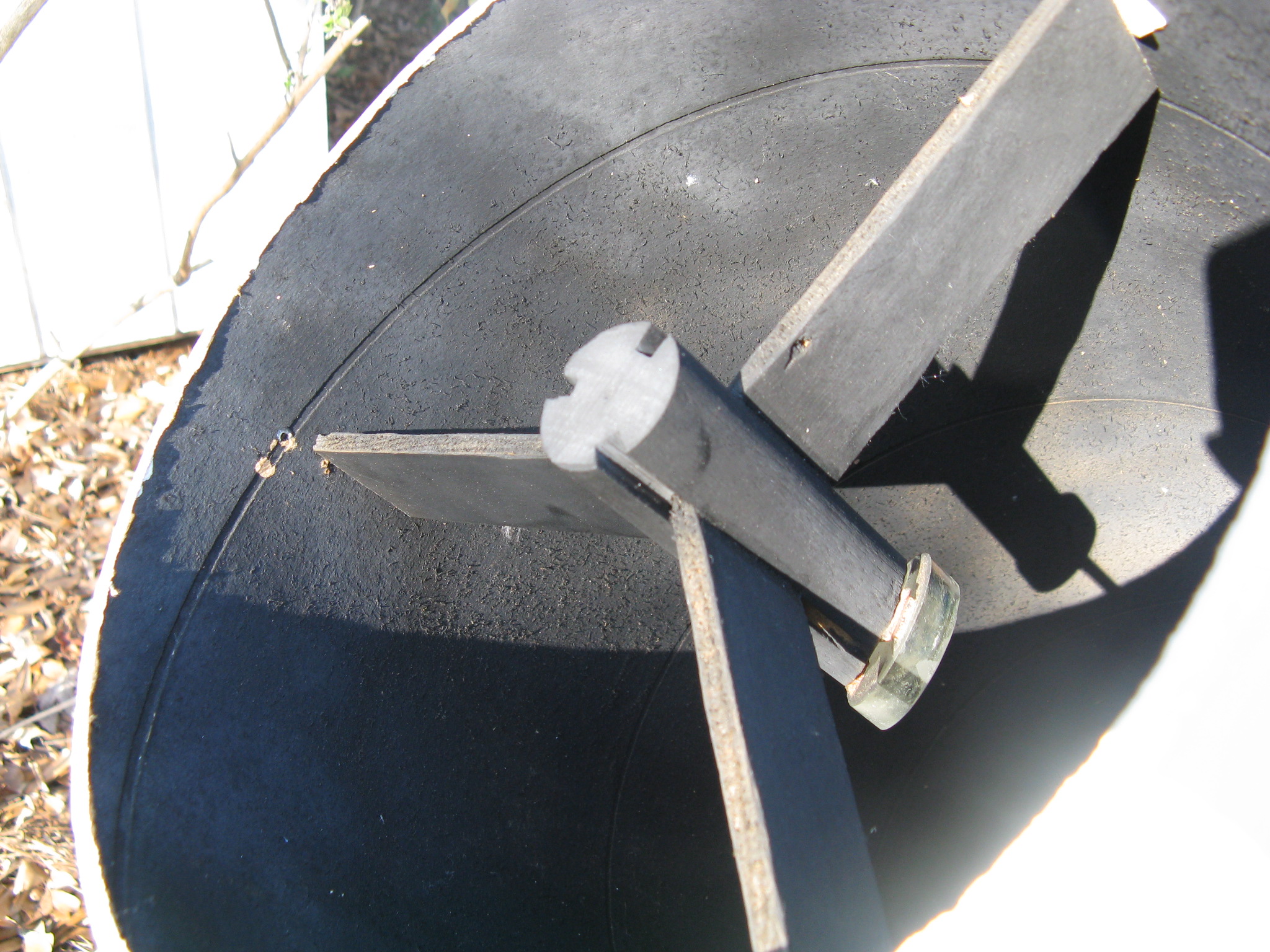 It certainly looked pretty good after I got around to painting it. And note the bungie cord holding the mirror in place! The big
It certainly looked pretty good after I got around to painting it. And note the bungie cord holding the mirror in place! The big 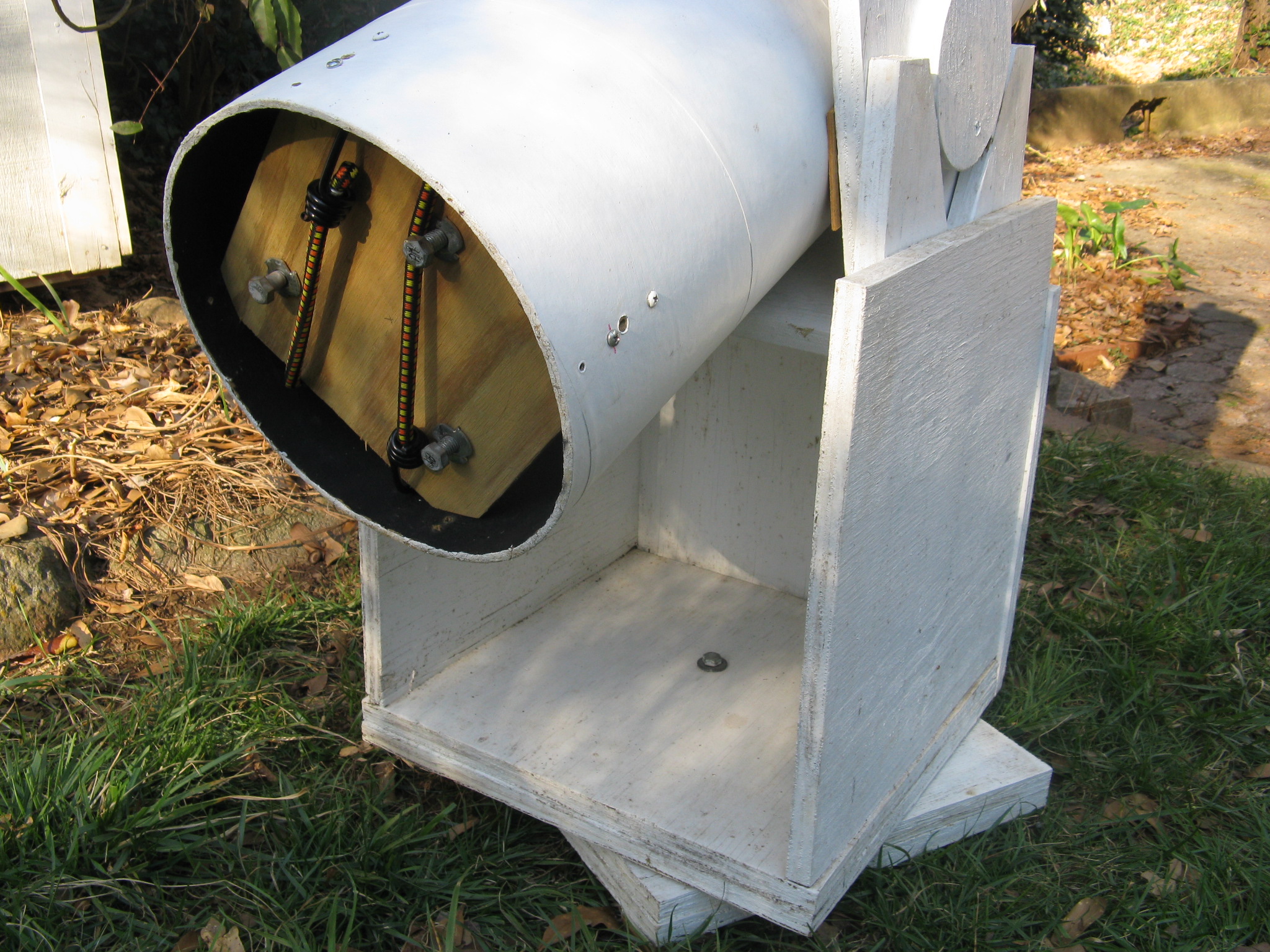 The bungie cord simply keeps the mirror from flopping forward, and doesn’t really degrade the image so I just left it there.
The bungie cord simply keeps the mirror from flopping forward, and doesn’t really degrade the image so I just left it there.